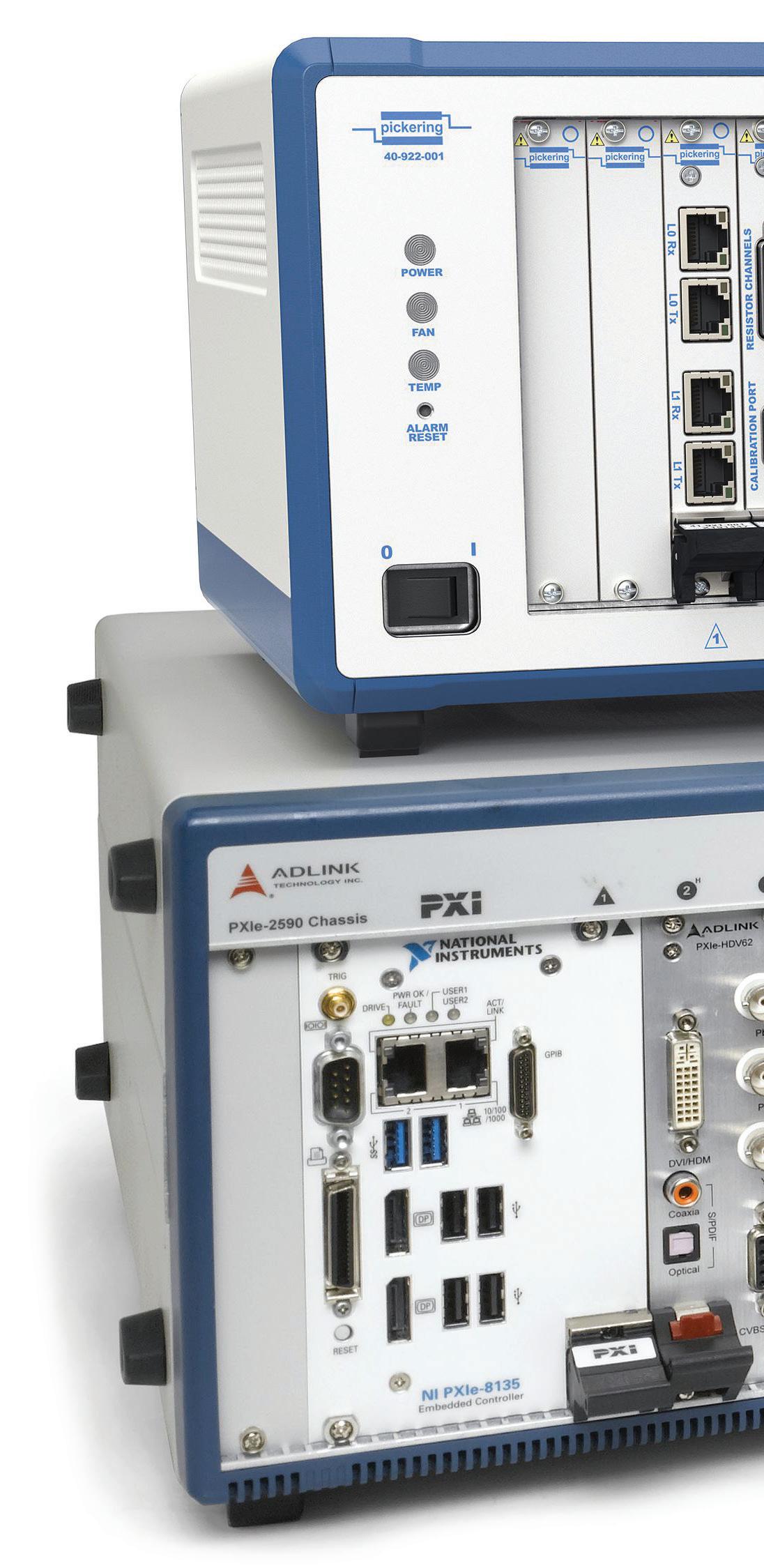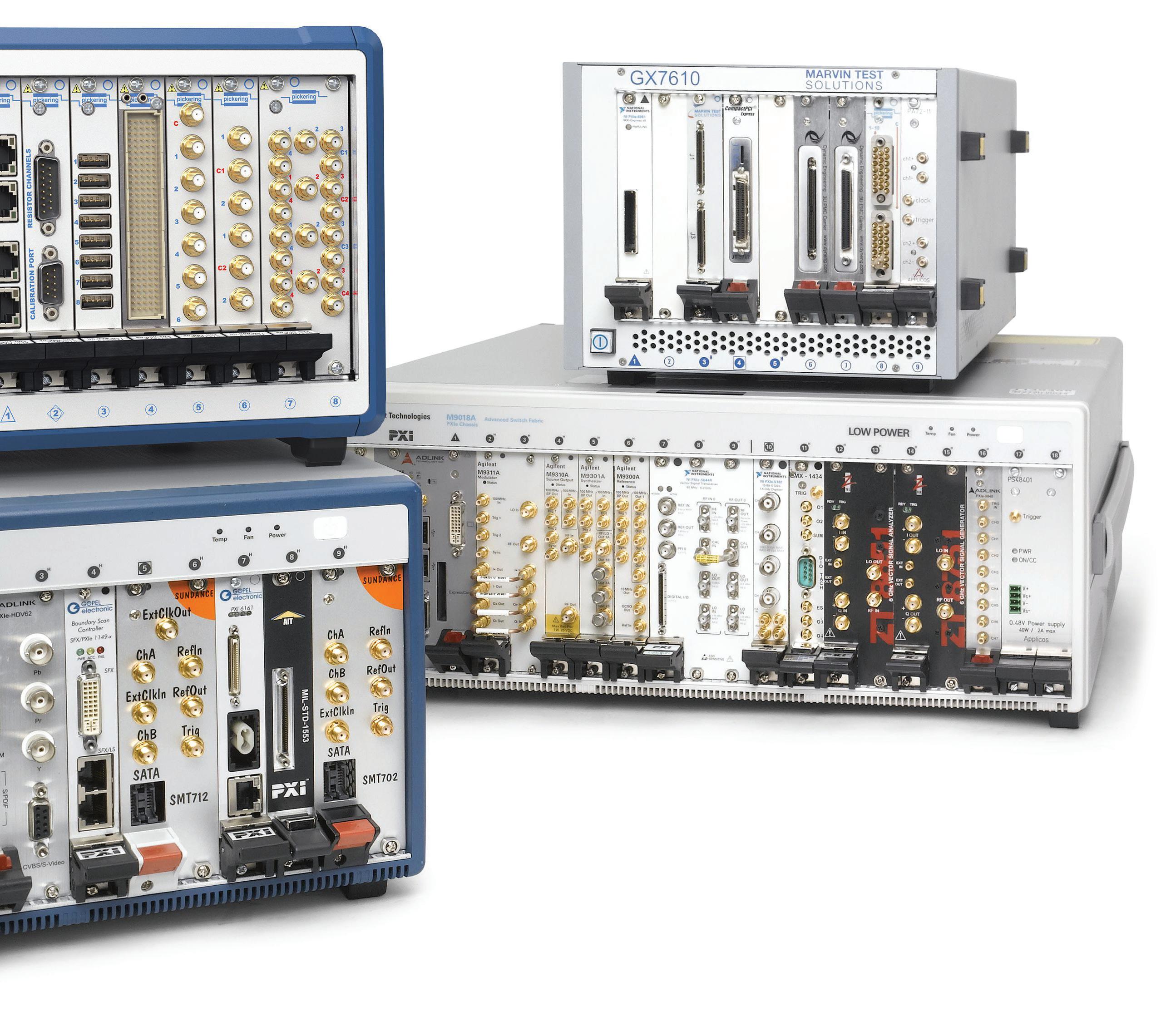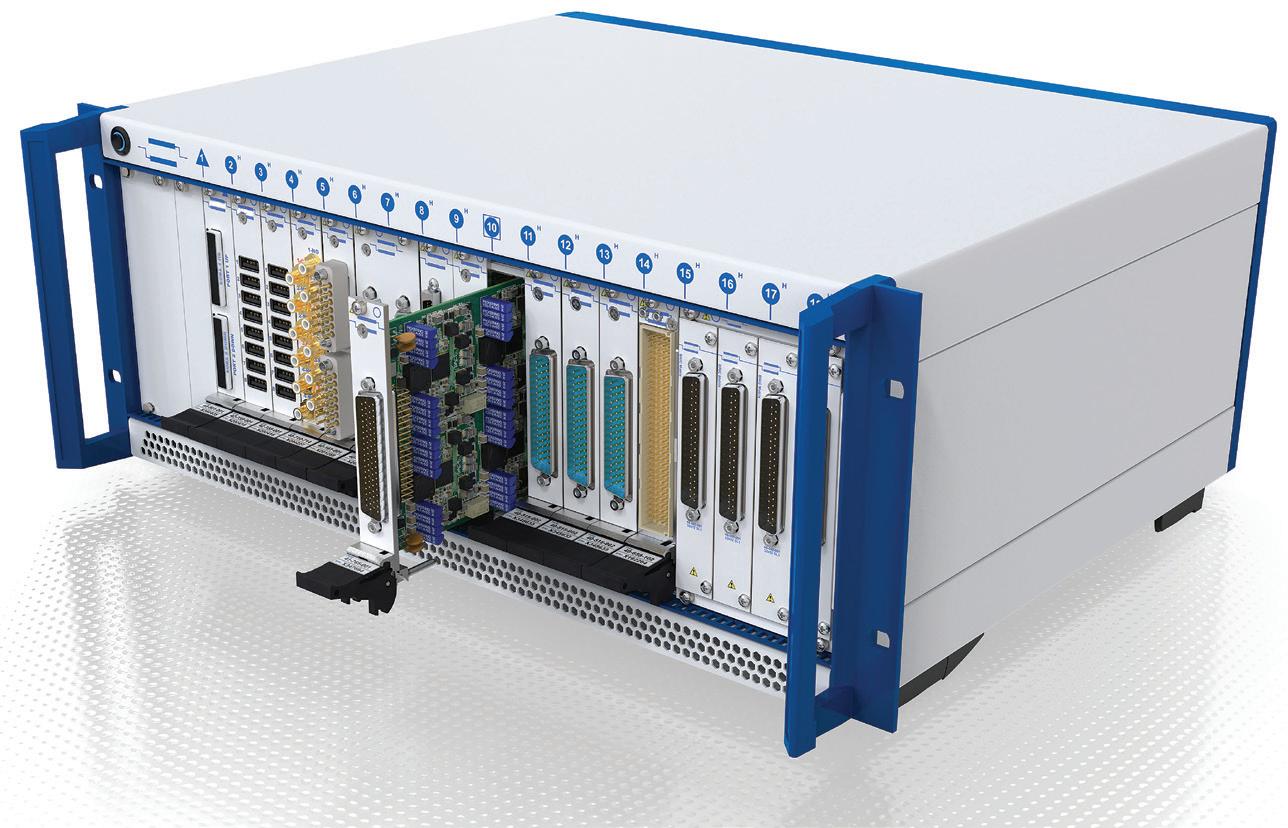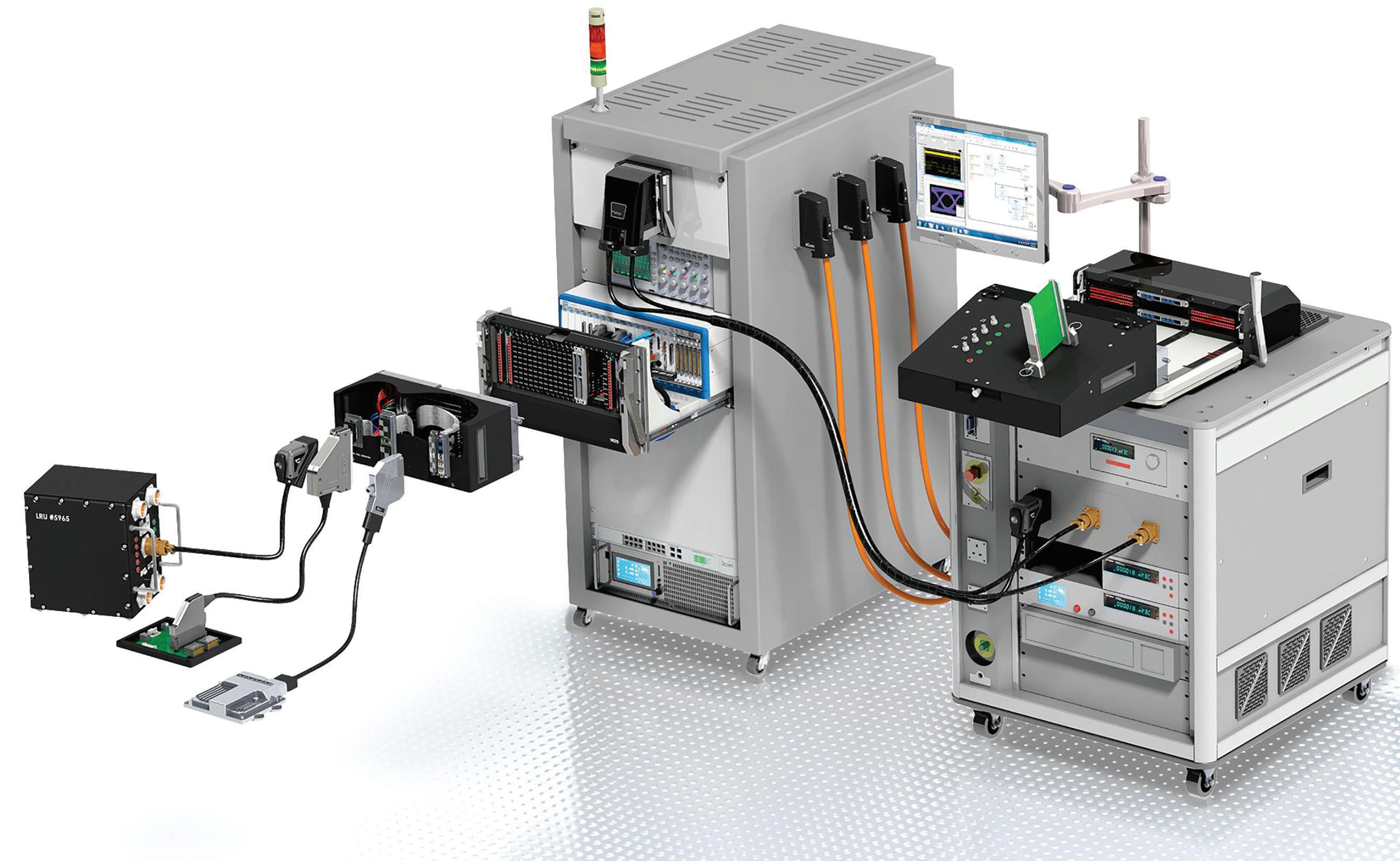
4 minute read
How modularity benefits test systems
By understanding the key issues at every phase of the product lifecycle, engineers can make decisions that result in flexible, reliable, and scalable test systems. Taking a modular approach to test system development can accelerate development and mitigate risk throughout the entire product lifecycle.
By Bob Stasonis | Pickering Interfaces
When designing and building automated test systems, today’s engineers find that modularity is key. By using modular hardware, organizations can more e ectively manage test equipment from new product introduction (NPI) to mass/highvolume production.
Automated test systems have di erent demands as the products they test move through their lifecycles. During NPI, engineers verify design requirements. As products move to mass production, test systems validate the product. Finally, as products evolve or become obsolete, test systems may need modification, or equipment can be reused for new projects.
Modular test systems typically consist of computer-controlled chassis housing multiple instruments, power supplies, and switching modules interconnected to form complete automated testing stations. Such test systems allow for easy upgrades to support new products, and straightforward replacements of defective modules. PXI has become the dominant modular hardware platform for electronic test, measurement, and automation applications.

Why PXI?
PXI is short for the PCI eXtensions for Instrumentation bus standard. Introduced in 1997, it is an open, industry-standard, chassis-based architecture that defines how engineers can connect instruments, computers, and other devices using a common requirements bus. PXI systems use the PCI or PCI Express buses to interconnect modules in the chassis.

Phase 1: designing test systems for new products
As products move through their lifecycles, organizations face di erent challenges. In the early stages of NPI, for example, there is a need to quickly and e ciently test the product to verify design requirements. This can be best accomplished by taking into consideration the following:
Modular test systems don’t tie organizations to specific programming interfaces or operating systems, allowing engineers to use their preferred platform and tools.

Bridging the gap between design and test engineers
One of the best ways to ensure an e ective and e cient test system is to consider test requirements early in the design phase. Design engineers will primarily look for their designs to fulfill the product requirements without always thinking about product testability in a production environment. By bringing test engineers into discussions early, they can advise on any testability issues that may need to go into the product design.
Evaluating test equipment’s ease of use and adaptability
Once the product specifications and test expectations are set, it’s important to get the test system up and running quickly. Rapid development and deployment of the test system lets engineers verify the product and move forward as soon as possible. Upon first run of a test system, issues may arise. As the debugging process takes place, erroneous connections can damage subsystems, so being able to quickly diagnose and repair failures is imperative to keep the testing process moving forward.
Paying attention to equipment cost and availability
Cost and availability are always important, but design engineers sometimes only consider the verification testing needed in product development. If the same test system design is needed for a high-volume production test, it may demand repeat purchasing of costly or scarce components, resulting in cost/time overruns in the future.
Phase 2: moving from NPI to highvolume test
When products move from the validation testing needed for NPI to production test, engineers no longer check for product design faults; they’re looking for component or manufacturing faults. A well-planned NPI test system can evolve and scale to production testing if it is designed with the following in mind:
Considering available resources
Footprint, cost, test accuracy, and availability are all important when moving to a production test system. In the NPI phase, engineers are usually working with a full test bench, providing adequate space for equipment.
Minimizing product test time
For high-volume production, you must optimize the productivity of all test processes to minimize the number of test systems required to meet production demands. This entails minimizing the setup and test execution time of each system. The device under test (DUT) must quickly and reliably connect and disconnect from the test equipment so that time is not wasted between units as it moves through the test system.
Making those connections requires reliable interfacing and possibly even incorporating mass-interconnect systems for products with particularly high changeover rates. In these cases, all connections are made simultaneously through reliable, high-usage connectors in a standard streamlined interface, as shown in Figure 2.
Operation and integration requirements
To minimize any adverse impact on production, test systems must be reliable and quick to repair if a fault develops. Also, because production testers are often handed o to test technicians in di erent locations and even countries, they must be easy to operate and well-documented. Similarly, production testers may need to integrate with factory management systems. Industry-standard controllers and programming interfaces will help facilitate these objectives.
Phase 3: update test systems as products change
As products evolve, support will always be a factor — it’s inevitable that test systems will need to be modified or components will require replacement. The following considerations set production test systems up for long- term success throughout the entire product lifecycle:
Minimizing the opportunity for errors
Every test system should produce the same test results, so engineers should look for quality and consistency of performance across multiple test systems. Interconnects can easily prove a failure point as DUTs are mechanically connected and disconnected.
Using industry-standard tools
When a test system moves out of NPI and into production, it must be easy to use, debug, and adapt to design changes. Industry-standard test hardware and software will provide familiarity, scalability, and flexibility, streamlining tester deployment. DW
Pickering Interfaces pickeringtest.com/en-us/
WHAT DO YOU THINK?
Mass interconnect systems provide a mechanical interface that simplifies connections between the device under test (DUT) and the instrumentation, power supplies, and switching in a test system.











